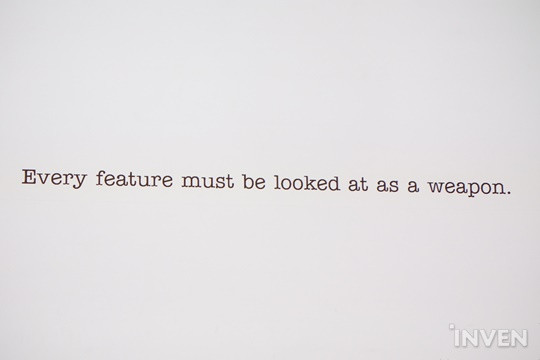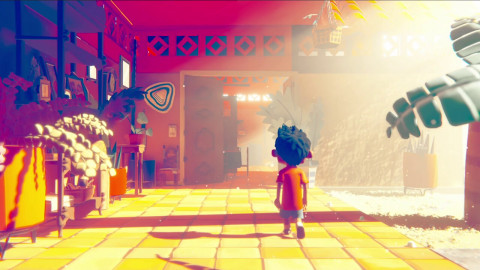
On the final day of GDC 2017, Raph Koster, who is known for his work as the lead designer of Ultima Online and is the author of A Theory of Fun for Game Design, got on the stage to discuss the ethical implications of creating social VR environments.
Despite today’s VR hardware continuously advancing, societal views on ethical problems in the virtual space have largely remained the same. Recently, this issue resurfaced when a female VR player was groped in a virtual place. To borrow the words of that particular game’s dev team, can sexual assault or even murder be condoned as long as they take place in a virtual reality? Koster, who is already familiar with these cases in Ultima Online, shared his insight on what AR and VR can learn from MMOs in this regard.
*This article has been written in the perspective of the speaker for readability purposes.

Social spaces are not just games. When I designed Ultima Online, I personally didn’t think that I made a game. What I created was a space with a particular lore and a society at the same time. The game emerged as a part of the virtual society.
If you plan on building a social VR video game, you too are building a society by proxy. Sometimes online societies are created intentionally, but most are unintended byproducts of game design.
We now live in a world with many companies that aim to expand these social AR/VR worlds. However, I fear for their apparent lack of basic knowledge regarding ethical issues in virtual reality.

You may recall there was news about some sexual harassment in a VR world. When she logged in to play the game, she was groped by another player. Even though the incident involved graphical renditions of hands and bows, the virtual violation felt just as real.
What I want to highlight here is how QuiVR developers responded to this issue. No administrator was online while the victim was being sexually assaulted. The dev team realized the gravity of the situation only after media outlets covered the news and so they prevented future inappropriate conduct by introducing a “personal bubble” that disables character visuals when hands get near another player’s body.
Actually, an authority figure, who monitors and resides in the game, should have been there in the first place to deal with the perpetrator and to prevent him from joining the game. If you plan to run an online community, everything that happens inside the community is your responsibility. If you don’t have the means to prevent abuse, then you should not operate online communities.

To safeguard against ethical problems in virtual reality, you have to come up with a code of conduct with penalties, which all players must consent to. To punish those who break the code, you will have to archive every interaction in the client and record voice logs and gesture data to collect any irrefutable evidence. All this effort becomes prohibitively expensive, but is well worth the resources.
Even though the team behind QuiVR was quick to address the issue, they neglected to mention anything about banning the attacker. Perpetual attacks in virtual space are commonplace, and those with the blackest hearts can inflict harm to thousands of people. In fact, one murderer in Ultima Online has killed about four thousand players. This kind of issues will only be more dangerous when it comes to VR.
Blocking or silencing attackers is quite ineffective and has the same effect as blocking someone’s Twitter to punish him or her. I’d urge you to reconsider, because it will do little to deter problems arising in the virtual world from a third person perspective.

I highly recommend reading the article titled, A Rape in Cyberspace by Julian Dibbell in 1993. The gist of the article chronicles the events surrounding cyber rape with a player-controlling voodoo doll in a text-based MUD game, LambdaMoo. In 1993, people were divided whether this constitutes a real rape or not, but the same issue is more pertinent now than ever.
As social VR heavily relies on user-generated content, these kinds of incidents are bound to happen more frequently. Among game developers, there’s a unit called TTP(time-to-penis), which measures the time it takes for players to depict a penis in a given game. For instance, a female player has been assaulted by a swarm of penises in a virtual reality game called Second Life. As such, designers who want to create a virtual space must view every feature as a possible weapon.
Admin abuse is another thing to look out for. In the early days of MMOs, game masters performed sexual acts on regular players in a bathhouse, using their in-game status. Also be aware of the fact that digital currency may carry real monetary value. GMs may sell virtual money for financial gain or use it for sexual favors. People can do anything for money. Don’t open your virtual world without a set of laws that take these things into consideration.
Additionally, some players may use your virtual world as self-therapy. For them, you must be prepared to call police, to contact suicide hotlines, and to track runaways. You must be mindful of the fact that online friends may be the only significant others for people in psychological pain, and that they may attempt drastic measures at any time.



Sort by:
Comments :0







